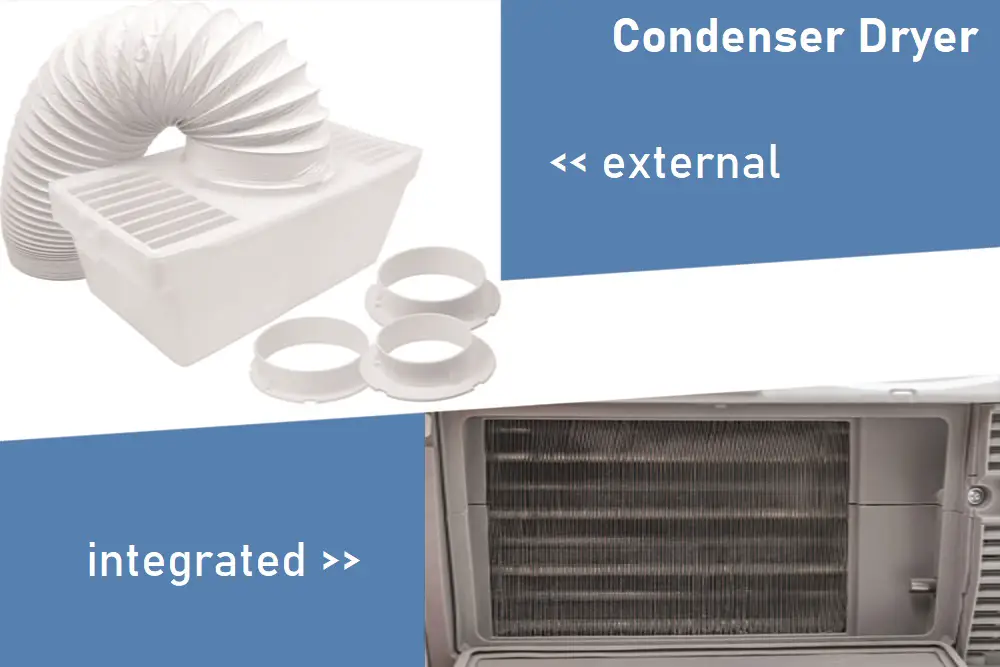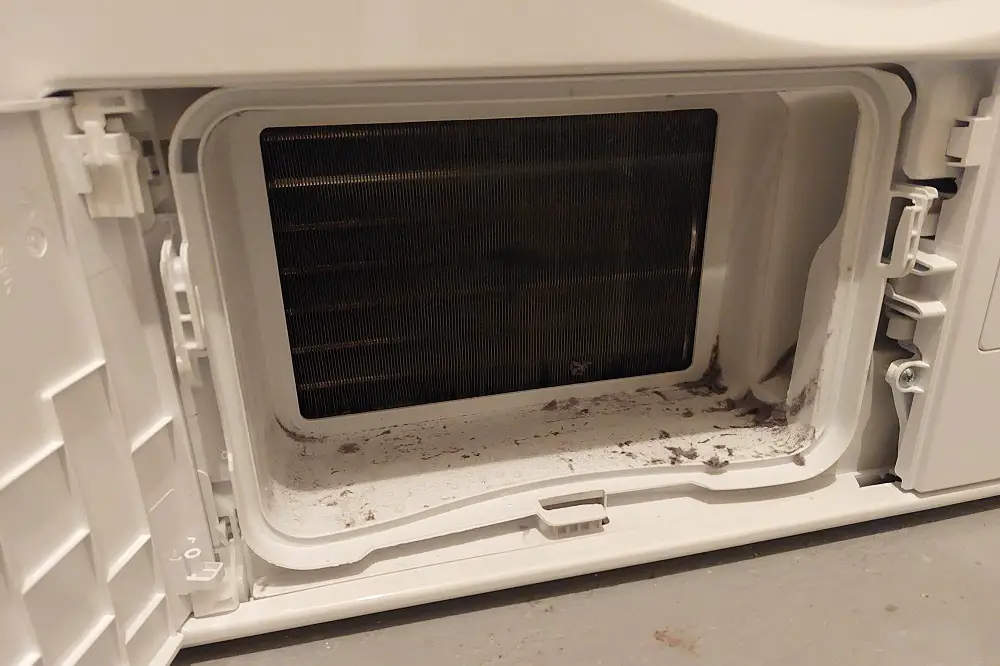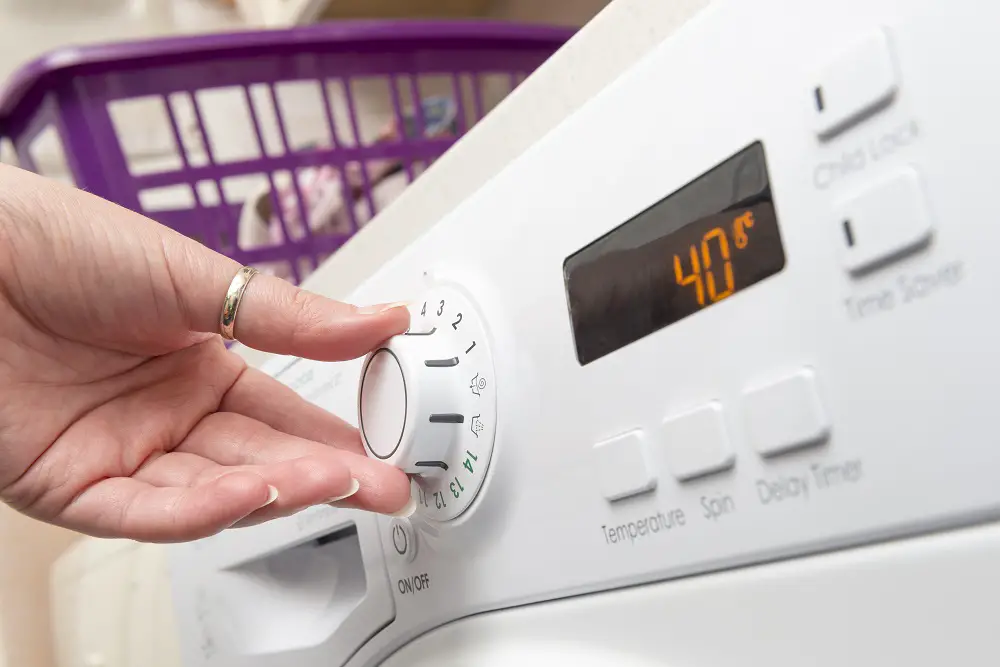Among the different heating and cooling appliances at home, an electric dryer is one of the essentials that consumes a lot of energy.
The average power consumption of a tumble dryer ranges between 1,000 – 6,000 W (1 – 6 kWh), with the industry average considered as 3,000 W (3 kWh). For a drying cycle of about 45 minutes, the total energy sums to about 2.25 kWh per cycle.
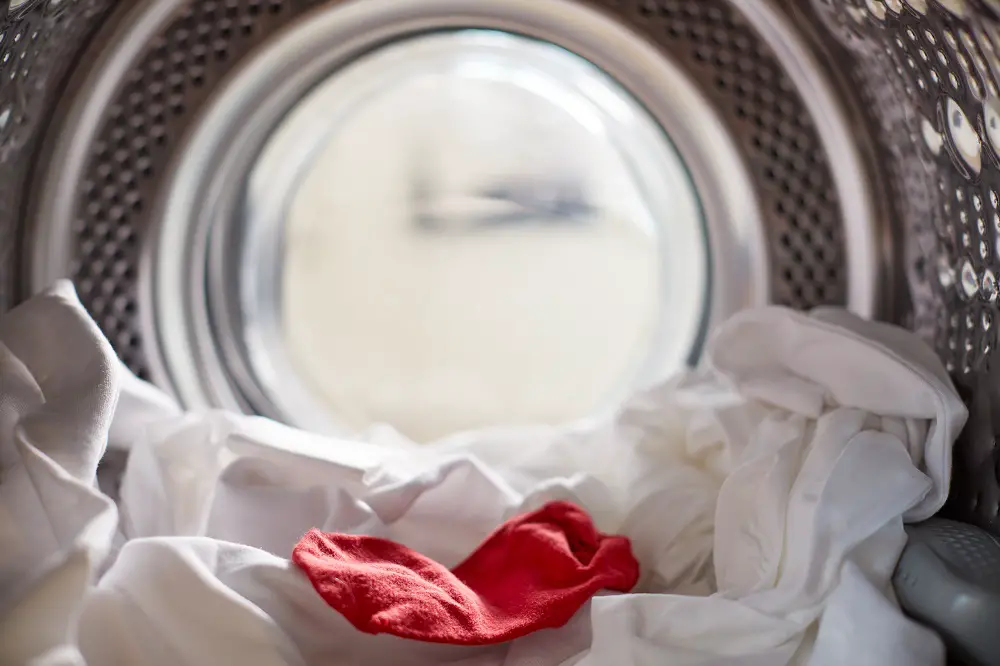
How much electricity clothes dryers use depends on their power rating, type, capacity, mode of use (hot air mode, warm air mode, Eco mode, etc.), total drying cycle time, and the number of cycles.
Table of Contents
Energy Consumption Of A Tumble Dryer
How much energy a tumble dryer uses depends on the type of dryer and other factors. Among the different types of dryers (vented, ventless – condenser, heat pump), a heat pump dryer is the most energy-efficient.
A gas dryer, a smaller dryer, a brand new dryer, and any energy-efficient dryer consume much less energy, helping you save money on your electric bill. Over a period of time, this makes up for the initial cost spent to purchase the dryer.
Here’s how much electricity each type of dryer uses on average.
| Type of Dryer | Average Energy Use |
|---|---|
| Vented dryer (9 kg) | 5.34 kWh |
| Condenser dryer (9 kg) | 5.2 kWh |
| Heat pump dryer (9 kg) | 2.16 kWh |
| Gas Dryer | 150 W and 0.11 therms of natural gas |
Based on the different capacities of a tumble dryer:
| Capacity | 5.5 lbs | 6.6 lbs | 9 lbs | 13.2 lbs |
|---|---|---|---|---|
| Size | 1.5 cu ft | 1.41 cu ft | 2.65 cu ft | 3.5 cu ft |
| Capacity (Dry Clothes) | 5.5 lbs | 6.6 lbs | 9 lbs | 13.2 lbs |
| Capacity (Wet Clothes) | 10 lbs | 10.56 lbs | 14.5 lbs | 20.8 lbs |
| Power | 850 W | 1020 W | 1400 W | 1500 W |
| Electricity Usage Per Hour | 0.85 kWh | 1.02 kWh | 1.4 kWh | 1.5 kWh |
Energy Cost Of A Tumble Dryer
The costs of running a tumble dryer depend on the number of loads per week, the duration of the drying cycles, the dryer’s wattage, and, most importantly, the electricity rates of different energy providers.
Considering an average price of $0.2/kWh and three loads per week, here are the statistics.
| Capacity | 5.5 lbs | 6.6 lbs | 9 lbs | 13.2 lbs |
|---|---|---|---|---|
| Electricity Usage Per Hour | 0.85 kW | 1.02 kW | 1.4 kW | 1.5 kW |
| Energy Cost Per Hour ($0.2/kWh) | $0.17 | $0.204 | $0.28 | $0.3 |
| Energy Costs for a 200-minute cycle | $0.561 | $0.67 | $0.924 | $0.99 |
| Energy Cost for 1 lb | $0.102 | $0.1015 | $0.1026 | $0.076 |
| Annual Energy Cost (3 loads/week) | $24.48 – $80.78 | $29.38 – $96.48 | $40.32 – $133.1 | $43.2 – $142.56 |
How To Reduce The Energy Cost Of A Tumble Dryer?
Here are some suggestions to reduce the energy usage of a tumble dryer, in turn reducing the energy bills.
Avoid Overloading/Underloading
Overloading a dryer leaves insufficient space for the warm air to circulate through the tumbling clothes, causing the load to take longer to dry completely.
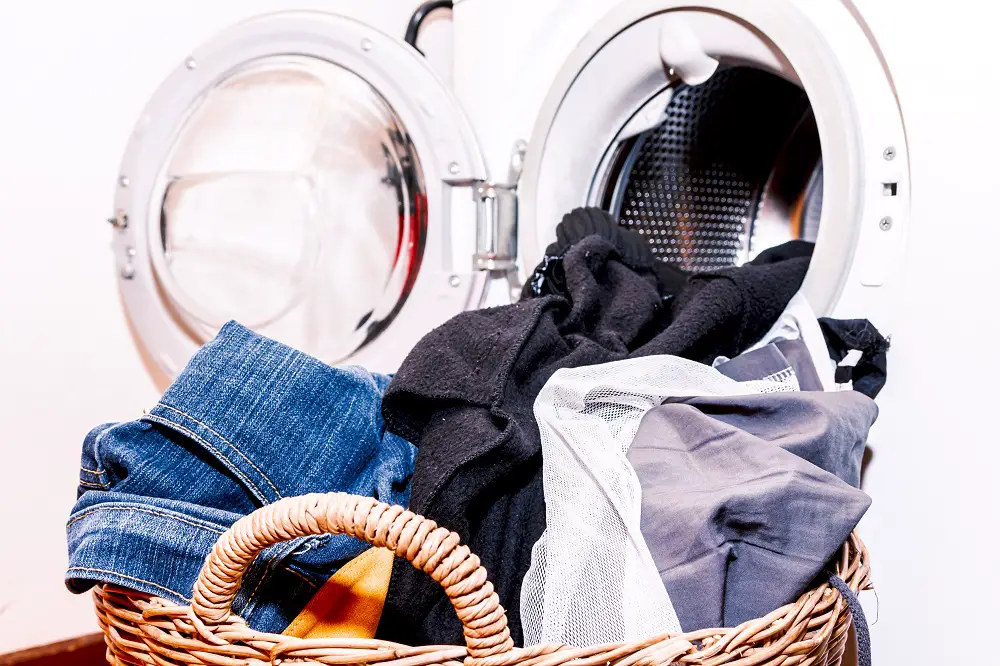
Most likely, you’ll need to run a second cycle to fully dry them, increasing the dryer costs.
Similarly, underloading leads to using a full load’s worth of dryer energy only for a few clothes.
It is recommended to fill the dryer drum to three-fourths of its capacity for efficient drying.
Run the Dryer in Off-Peak Periods
Use the delay start function to run your dryer on the less expensive off-peak tariff.
Most utility company charges vary depending on the time of the day. The off-peak rates are almost half the peak rate’s price and effectively help reduce the cost of running electric dryers.
Regular Maintenance
Clean the lint trap of the dryer after each use to keep your dryer running efficiently and to help prevent fires.
Also, clean the vent hose (for vented dryers) regularly to clear any clogs or obstructions that could reduce the dryer’s efficiency.
If your dryer has an autocleaning feature, it helps clean fluff from the condenser at the end of each cycle. It ensures reliability and long-lasting performance.
Choose the Highest Spin Speed on Your Washing Machine
Wetter clothes dry more slowly and make your clothes dryer work longer.
Before you put your clothes in the dryer, use the fastest spin speed setting on your washing machine to remove excess water from the clothes.
This improves the drying time whether you opt to hang dry or use a dryer.
Use Dryer Balls
Add tumble dryer balls (preferably wool dryer balls) with your laundry load to help reduce the drying time.

The dryer balls prevent the laundry from clumping together, allowing warm air to circulate better and helping reduce drying time by almost 20 – 30% per load.
You could also throw in a dry, fluffy towel to absorb some of the moisture.
Use the Sensor Drying Cycle
Most tumble dryers (including vented models) feature sensor drying these days. It measures the humidity in the drum and automatically adjusts the drying time for the dryness level selected.
The sensor drying feature helps save energy and reduces the cost of running your tumble dryer.
Sort Your Laundry
Different fabrics have different drying times. You can shorten the drying cycle by drying similar clothes together.
Sort your laundry into heavy, light, and delicate, and dry them in separate cycles.
If you mix different loads, you may have some wet clothes or overheated and damaged clothes at the end of the cycle.
Dry Multiple Loads in a Row
When you start a new load in your dryer, as soon as the previous load is done, the new load uses the residual heat from the previous cycle, helping dry the load faster.
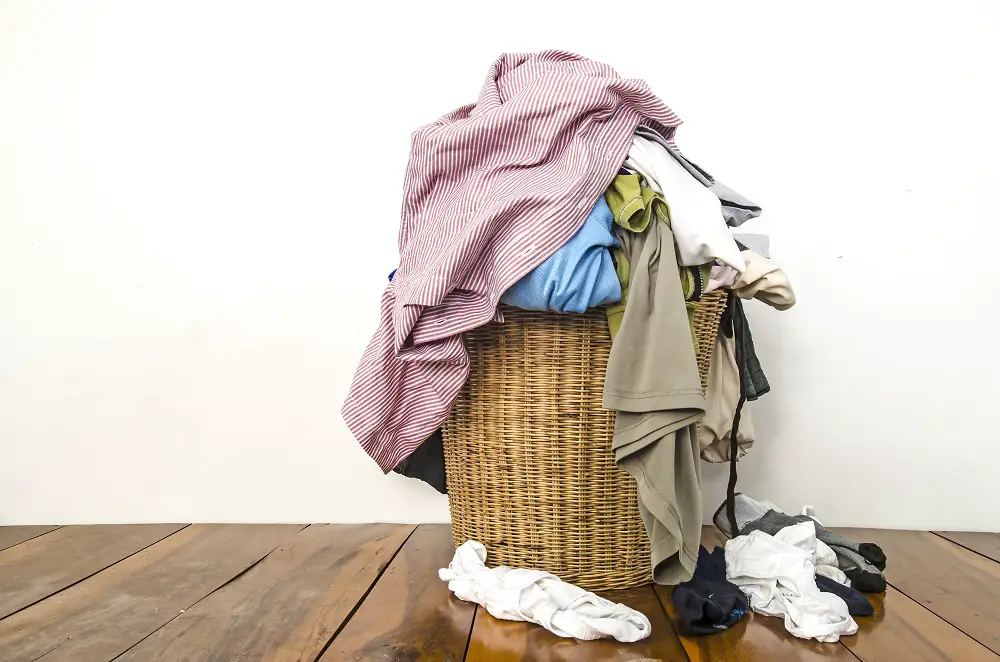
This could help in reducing the time and cost to run the tumble dryer.
Go For a Heat Pump Dryer
Heat pump dryers are comparatively more energy efficient than the vented models.
They use lower temperatures (that helps protect clothing) and less energy. Some models even have drum movements (reverse tumbling) that prevent the clumping of laundry for efficient circulation of warm air.
Alternatives For Tumble Drying
Whether you don’t have a tumble dryer or you aren’t keen on using one regularly (to reduce your electricity bill), here are some alternatives to get your clothes to dry fast without a tumble dryer.
Hang Dry
Use a washing line or clothesline to hang dry your laundry.
For those with insufficient outdoor space or on cold or rainy days, indoor drying racks are a better option.
Keep rotating the garments and leave sufficient space for air circulation to allow the clothes to dry faster.
Use a Heated Drying Rack
A heated airer or a heated drying rack is a good alternative to a tumble dryer.
Although the average drying time is about 8 hours, it consumes lesser energy than a tumble dryer and produces only a little moisture. It’s also more efficient that a non-electric airer.
Run an Extra Spin Cycle
Before you take your clothes out of the washer, run an extra spin cycle to wring off excess water.
The energy usage of a spin cycle is far less than the energy consumed by a tumble dryer.
The dryer you can get your clothes to begin with, the shorter the overall drying time, even if you opt to line dry.
Use a Hairdryer
A hairdryer works to get small items or light fabrics completely dried.
However, since hairdryers produce concentrated heat, you need to use one with caution to avoid damaging any fabrics.
Use a Towel
A towel can be used in two different ways to help dry your items of clothing.
Roll Your clothes Into a Towel
Place your garment on a large towel and roll it up. Starting at one end of the towel, tightly twist it and work your way along till the entire towel is twisted. This helps squeeze excess water out of clothes.
The Towel and Iron Hack
Keep your garment on an ironing board and place a clean towel on top of it. Iron over the towel using high heat, stopping to turn the garment over so both sides are pressed. This helps warm the garment without causing damage to it.
Use a Dehumidifier
Some dehumidifier models have a dedicated laundry setting to help create the best conditions for drying clothes faster.
You can still use models without the laundry setting. Hang your laundry on a rack or an airer in front of the dehumidifier on the ‘Auto’ setting.
An even better option is to use an electric fan and a dehumidifier to cut down the drying times.
A Spin Dryer
Spin dryers are a more energy-efficient option than tumble dryers.
A spin dryer spins at a much higher rate than a washing machine and is capable of getting your clothes almost dry (about 90% dry). You can hang dry the clothes to dry them off completely.
You should read How Do Portable Spin Dryers Work? if you don’t know the details of this energy saver.
Conclusion
Tumble dryers do use a lot of energy. The factors that determine the annual cost of running a tumble dryer are the dryer type, its energy efficiency rating, the number of loads per week, cycle duration, and the utility charges per unit.
However, there are some effective ways to reduce the energy charges and alternatives to tumble drying (to significantly reduce utility bills) that you could consider.
